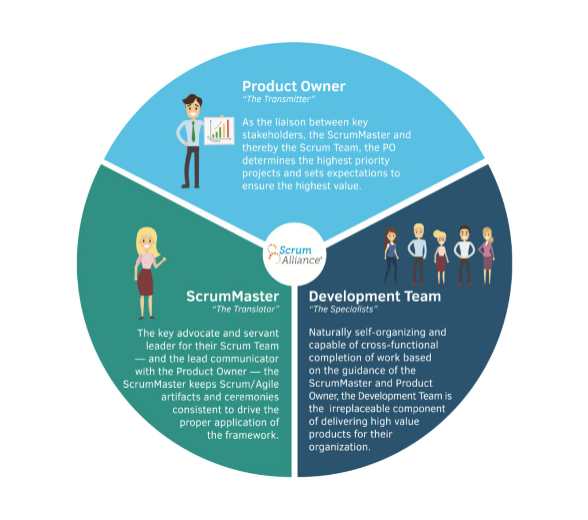In the realm of software development, the Sprint methodology has not only transformed how teams operate but also how they collaborate and yield results. When juxtaposed with traditional team management, the similarities are both enlightening and offer a renewed perspective on team dynamics.
- The Product Owner as The Director of Departments: Within the Sprint framework, the Product Owner emerges as the visionary, setting the direction and understanding the end goals. This mirrors the role of a department’s Director in conventional management, who delineates the department’s objectives, seeks enhancements, and ensures alignment with overarching organizational goals.
- The Scrum Master as The Middle Manager: The Scrum Master, integral to the Sprint team, ensures cohesion and smooth functioning. This role parallels the middle manager in traditional setups. They facilitate productive team discussions, clear hurdles, review work, shield the team from distractions, and balance workloads.
- Developers: The Organization’s Pillar: In Sprints, developers actualize visions, from coding to testing. Similarly, in traditional settings, these are the hands-on employees, be it engineers or construction workers, driving the organization and collaborating for optimal outcomes.
Sprint vs. Traditional Management: A Comparative Analysis
- Shared Ownership vs. Top-Down Decision Making: The Sprint methodology champions collective decision-making, ensuring everyone’s investment in the project. In contrast, hierarchical systems often employ a top-down approach, potentially sidelining team members’ insights.
- Flexibility vs. Rigidity: Sprints are inherently adaptive, allowing teams to pivot as needed. Traditional management, with its long-term and rigid plans, might struggle with swift adaptability.
- Continuous Feedback vs. Periodic Reviews: Sprint teams engage in regular retrospectives, ensuring timely issue resolution. Many hierarchical setups, however, rely on infrequent reviews, potentially prolonging problem resolution.
- Inclusivity of Voice vs. Restricted Participation: The Sprint methodology fosters open communication, giving everyone a platform. Hierarchical structures might limit this, often restricting communication flow from the top.
- Value-Centric vs. Process-Driven: Sprints prioritize delivering tangible value, focusing on impactful outcomes. Hierarchies might emphasize processes, sometimes at the expense of real value.
In Conclusion
While there’s a place for traditional hierarchical structures, offering clarity and stability, the Sprint methodology stands out with its collaborative, adaptive, and value-centric approach. Embracing the principles of shared ownership, continuous feedback, and value delivery, the Sprint mindset can cultivate more engaged teams, superior products, and satisfied customers.
